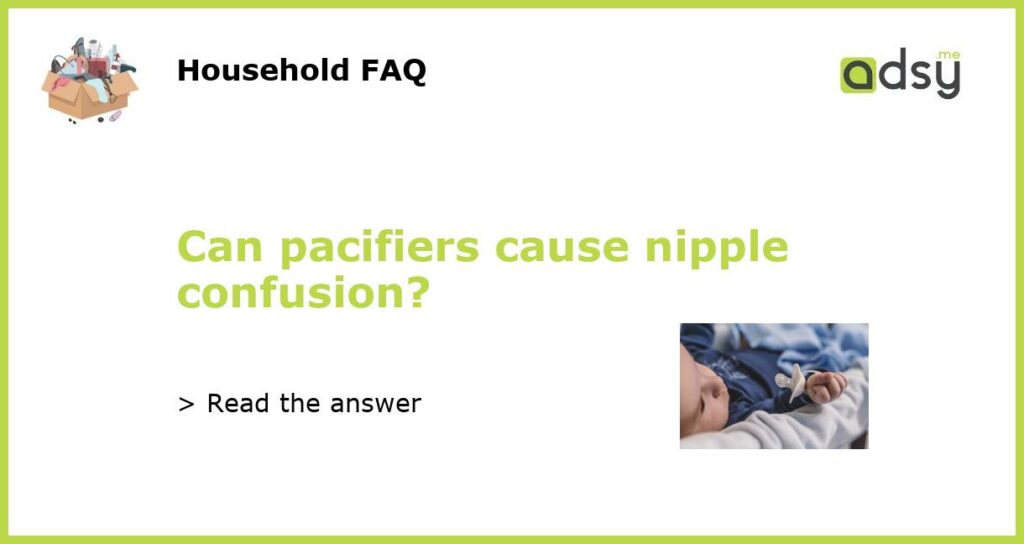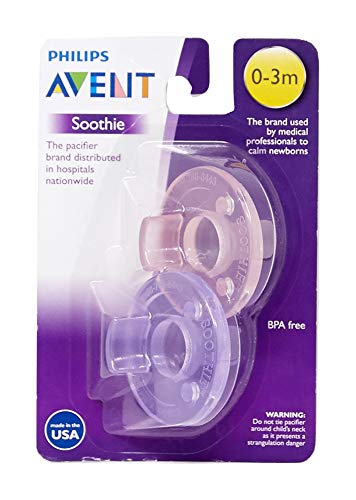What is nipple confusion and can pacifiers cause it?
Nipple confusion is a term used to describe a situation where a baby has difficulty transitioning between breastfeeding and bottle feeding. A newborn’s feeding patterns are instinctual and require a specific suckling motion at the breast. This differs from the sucking pattern necessary to draw milk from a bottle or pacifier. This disparity in feeding techniques can result in nipple confusion, leading to problems with breastfeeding and a baby’s overall feeding habits.
While there is no definitive evidence that pacifiers cause nipple confusion, they can contribute to it. The use of pacifiers may create a discrepancy in the way a baby learns to suck, which can make it challenging for them to properly latch on to the breast when breastfeeding. The shape of a pacifier nipple differs from that of a breast, potentially causing confusion for the baby when switching between the two.
Furthermore, when a baby sucks on a pacifier, their tongue and jaw muscles may be positioned differently compared to when they are breastfeeding. This difference in muscle movement can make it challenging for the baby to transition between pacifiers and the breast, leading to confusion and difficulty in breastfeeding.
It is important to note that not all babies experience nipple confusion, and some are more adaptable than others. Additionally, other factors such as the method of bottle feeding and the introduction of other artificial nipples (such as bottle nipples) can also contribute to nipple confusion. Therefore, it is difficult to solely attribute nipple confusion to the use of pacifiers.
How to reduce the risk of nipple confusion
If you decide to introduce pacifiers to your baby, there are steps you can take to reduce the risk of nipple confusion:
1. Wait until breastfeeding is well-established: It is generally recommended to wait until breastfeeding is well-established, typically around 3-4 weeks, before introducing a pacifier. This gives the baby time to develop a strong breastfeeding relationship and become proficient at latching on properly.
2. Choose breastfeeding-friendly pacifiers: Look for pacifiers that mimic the shape of a breast, with a rounded nipple and wide base. These are designed to be more similar to the breast and may help reduce confusion when transitioning between breastfeeding and pacifier use.
3. Limit pacifier use: Restricting pacifier use to specific times, such as for soothing during sleep or in-between feedings, can help minimize the potential for confusion. Avoid using the pacifier during breastfeeding sessions to ensure the baby associates the breast with feeding rather than pacifier use.
4. Maintain breastfeeding as the primary feeding method: Continue to prioritize breastfeeding as the primary method of feeding, and make sure the baby receives enough feedings at the breast. Regular breastfeeding sessions are crucial to establish and maintain a strong breastfeeding relationship.
Signs of nipple confusion
It can be challenging to differentiate between normal breastfeeding difficulties and nipple confusion. However, there are some signs that may indicate your baby is experiencing nipple confusion:
1. Difficulty latching on or staying latched during breastfeeding sessions.
2. Frustration or fussiness during breastfeeding.
3. Poor weight gain or inadequate milk transfer.
4. Preference for bottle or pacifier feeding over breastfeeding.
If you notice any of these signs, it is important to reach out to a lactation consultant or healthcare provider for guidance and support.
Overcoming nipple confusion
If you suspect nipple confusion in your baby, there are steps you can take to overcome it:
1. Seek support: Reach out to a lactation consultant or healthcare provider who can offer guidance and support. They can assess your baby’s latch and feeding patterns to determine if nipple confusion is present.
2. Focus on breastfeeding techniques: Work on improving your baby’s latch and positioning during breastfeeding. A lactation consultant can provide hands-on support and offer suggestions to help your baby navigate between breastfeeding and bottle feeding.
3. Gradual transition: If your baby is experiencing nipple confusion, gradually reduce the use of pacifiers and artificial nipples. This can help them relearn the correct sucking technique for breastfeeding.
4. Skin-to-skin contact: Engage in plenty of skin-to-skin contact before and during breastfeeding sessions. This can help enhance the baby’s natural instinct to breastfeed and promote bonding between you and your baby.
Pacifiers can contribute to nipple confusion, but they are not the sole cause. The shape and sucking technique required for breastfeeding differ from those for pacifier use, potentially leading to confusion for some babies. However, not all babies will experience nipple confusion, as individual adaptability plays a role. By waiting until breastfeeding is well-established, selecting breastfeeding-friendly pacifiers, and limiting pacifier use, you can minimize the risk of nipple confusion. If nipple confusion does occur, seeking support from a lactation consultant or healthcare provider can help resolve the issue and establish a successful breastfeeding relationship.






